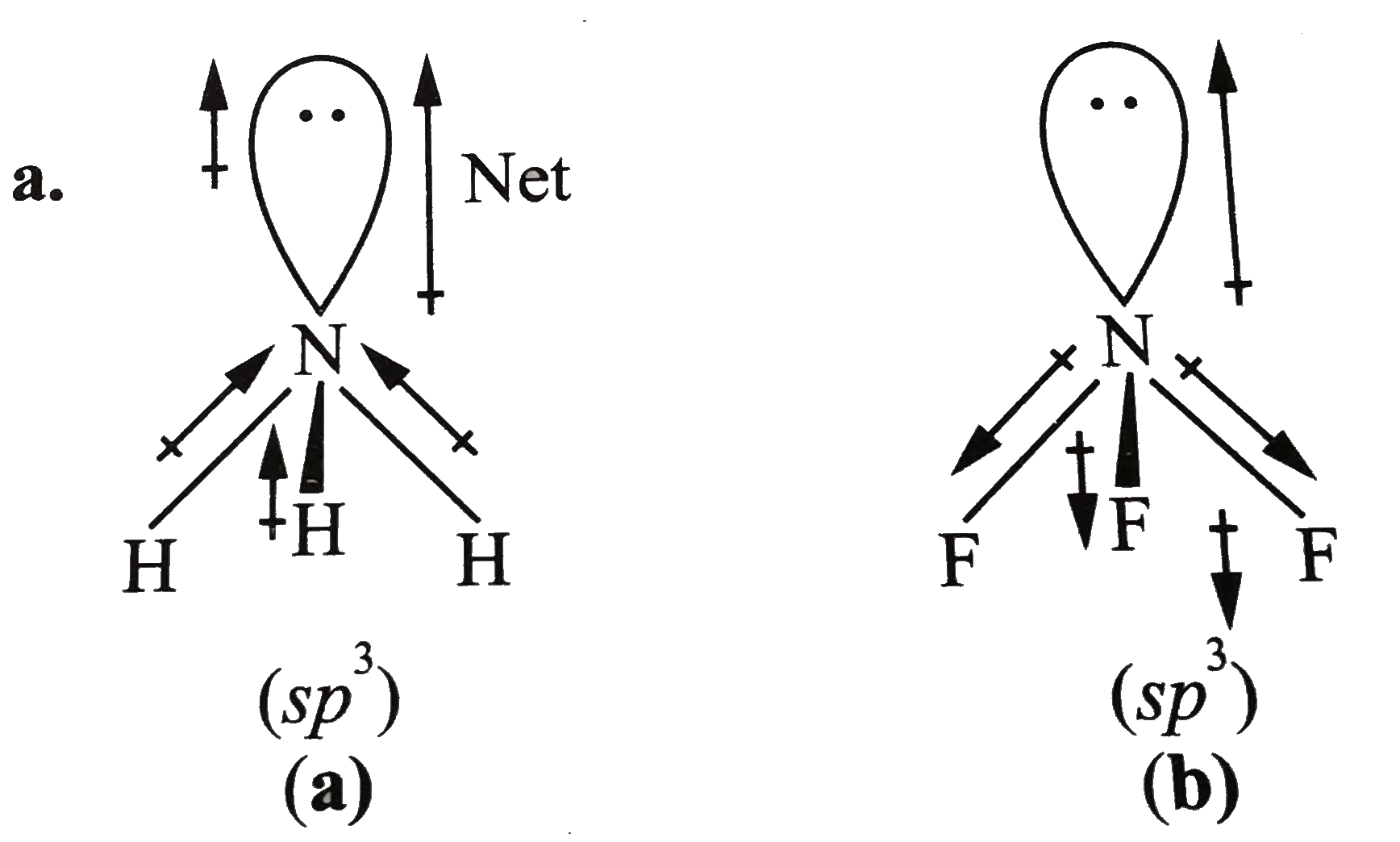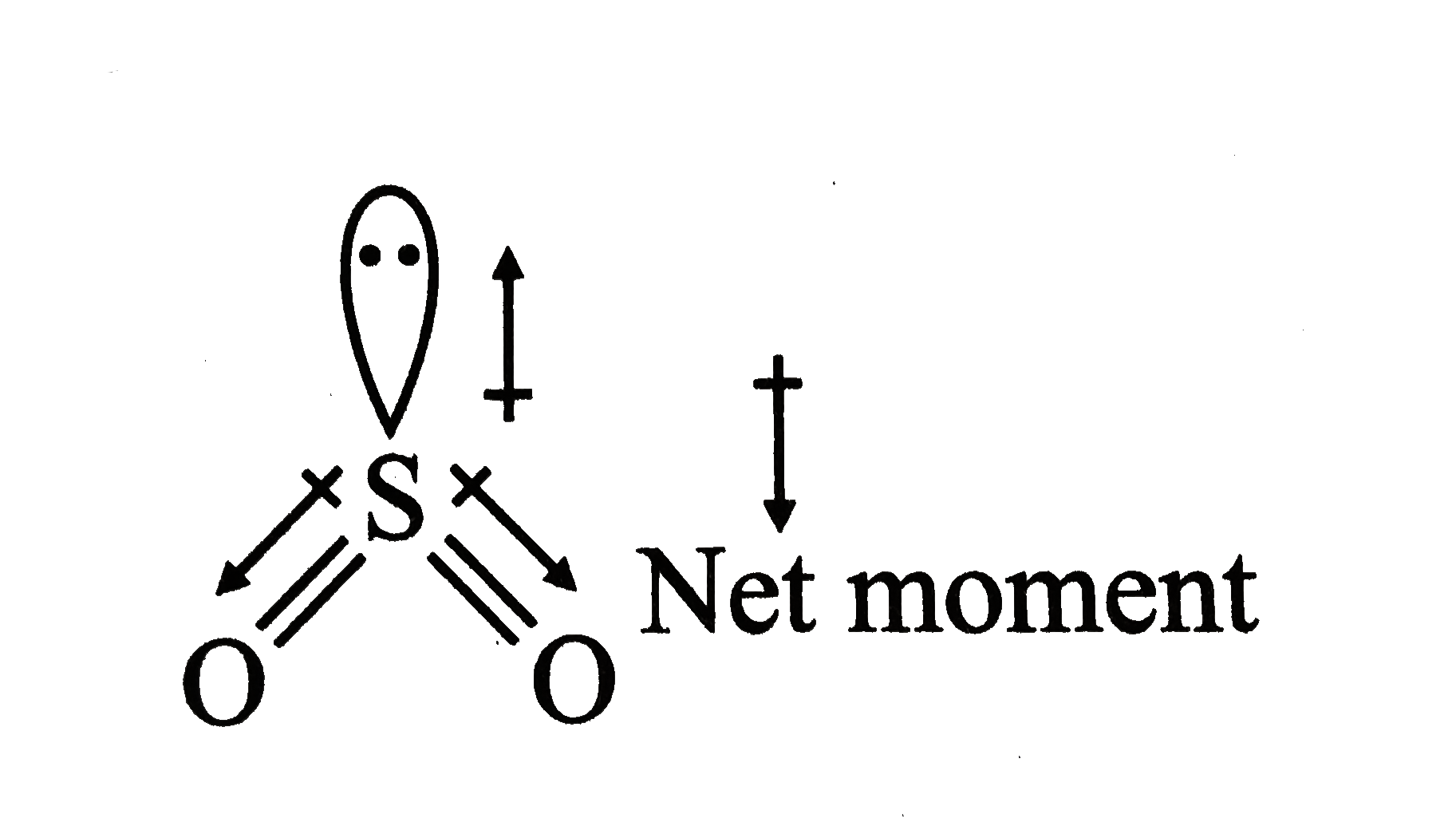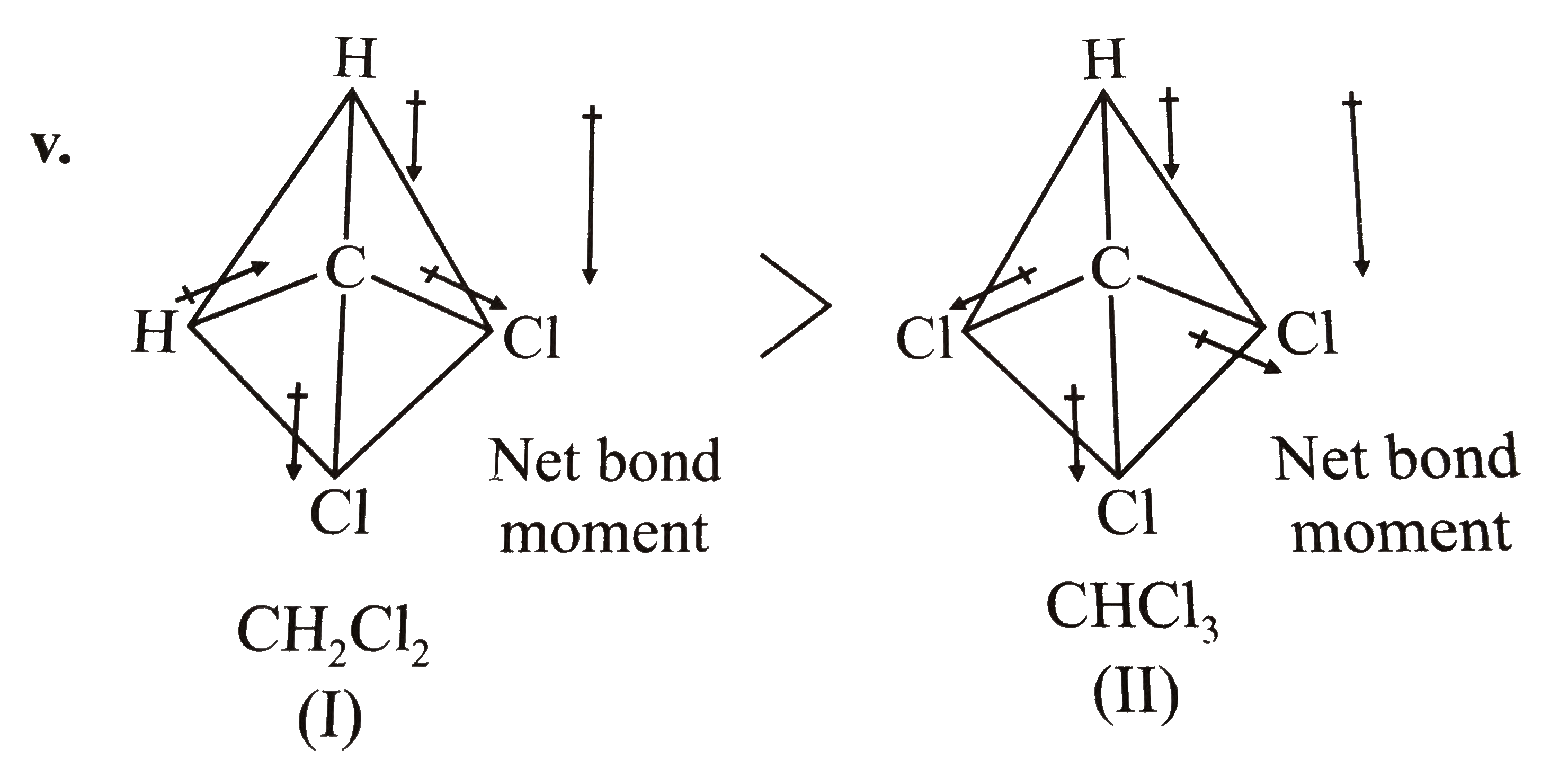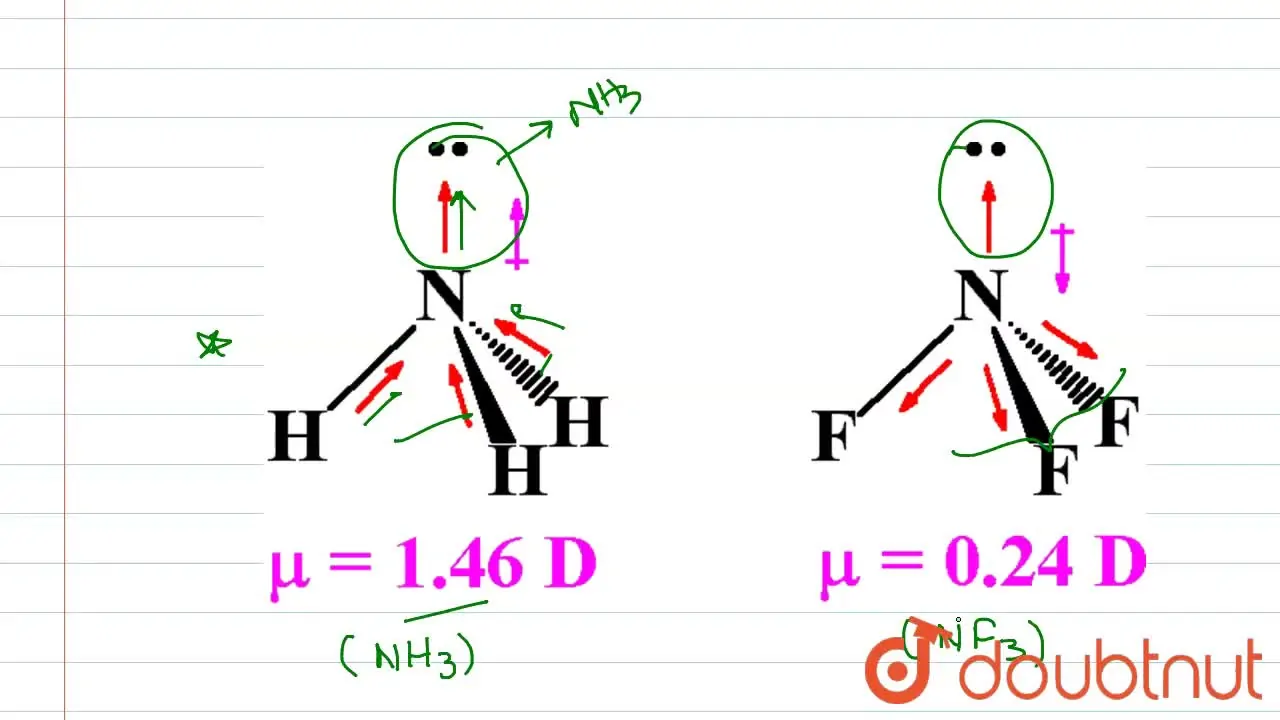Explain :
(i) μofNH3>NF3
[Resulant−(μ)ofNH3Resultant−(μ)ofNF3=4.90×10−3Cm=0.80×10−30Cm]
In NH3 the net moment of (N−H) bonds and the contribution from the lp e−'s (lone pair e−'s) are in the same direction and are additive [see (a) given above] The net moment of teh (N−F) bond opposes the dipole effect of the lpe−' in NH3 and the resultant is less than μSo,μ of Nh3>NF3
(b) The electronegatives of halogens decrease from F to So μ of HF>HCI>HBr>HI But μ of CH3F is smaller than CH3CI due to shorter (C−F) bond distance, although EN of F is greater than that of CI
(c ) In CO2'C is sp hybridised and linear The bond moments of (C−O) are equal and in opposite directions and cancel each other Hence μ is zero
in SO2 is sp2 hybridised having one lpe¯ on S atom. The (O−S−O) bond angle is nerly 120(S−O) bond moment does not cancel and shows a net resultant mu
(d) The 92∘ bond angle suggests that P uses three P atomic orbitals in forming bonds with H with one lpe− in 3s atomic orbital i.e P in PH3 is sp2 hybridised (unlike NH3 in which N is sp3 hybridised) Therefore, due to the presence of lpee−'s in 3s atomic orbital of P which is spherical symmetrical the polarity of the molecule is not affected. In order to effect the polarity of the molecule the e−s must be in a directional orbital Moreover, EN of P and H are nearly same so PH3 molecule is almost non-polar
In (I) all bond momnets are in the same direction so they are additive and the net resultant mu is more than (II) In (II) the bond moment of one of the CI atoms opposes, the net moment of the other two, so the net resultant mu is less than that of (I)



 .
.
Related Playlists
- BOOK - CENGAGE CHEMISTRY ENGLISHCHAPTER - CHEMICAL BONDING AND MOLECULAR STRUCTUREEXERCISE - Solved Examples36videos
CHEMICAL BONDING AND MOLECULAR STRUCTURE
- BOOK - CENGAGE CHEMISTRY ENGLISHCHAPTER - CHEMICAL BONDING AND MOLECULAR STRUCTUREEXERCISE - Ex 2 .2 Subjective (Intermolecular Forces And H-Bonding)7videos
CHEMICAL BONDING AND MOLECULAR STRUCTURE
- BOOK - CENGAGE CHEMISTRY ENGLISHCHAPTER - ATOMIC STRUCTUREEXERCISE - Concept Applicationexercise(4.3)19videos
ATOMIC STRUCTURE
- BOOK - CENGAGE CHEMISTRY ENGLISHCHAPTER - CHEMICAL EQUILIBRIUMEXERCISE - Subjective type1videos
CHEMICAL EQUILIBRIUM
Similar Questions
Which is more basic and why ? NF3 or NH3.
View SolutionExplain the
CH3NH2 acts as a nucleophile.View SolutionExplain why :
NH3 has a bond angle equal to 107∘?View SolutionA right angled prism of refractive index μ1 is placed in a rectangular block of refractive index μ2 , which is surrounded by a medium of refractive index μ3 ,as shown in the figure . A ray of light 'e' enters the rectangular block at normal incidence . depending upon the relationship between μ1,μ2andμ3 , it takes one of the four possible paths 'ef' , 'eg' , 'eh' or 'ef'
_E01_228_Q01.png)
Match the paths in List I with conditions of refractive indices in List II and select the correct answer using the codes given below the lists:
{:("List" I , "List" II) , ( P. e rarr f , 1. mu_(1)gt sqrt(2mu_(2))) , ( Q. e rarr g , 2. mu_(2) gt mu_(1) "and" mu_(2) gt mu_(3)), ( R. e rarr f , 3. mu_(1) = mu_(2)), ( S. e rarr f , 4. mu_(2) lt mu_(1) lt sqrt(2mu_(2)) "and" mu_(2) gt mu_(3)):}<br>Codes:<br>{:( P , Q , R , S) , ((A) 2 , 3 , 1 , 4), ((B) 1 , 2 , 4 , 3) , ((C) 4 , 1 , 2 , 3) , ((D) 2, 3 , 4 , 1):}View SolutionThe dipole moments of NH3,NF3 and H2O are in the order.
View SolutionDipole moment of NF3 is smaller than :
View SolutionIn the reaction :CH3MgCl+NH3→? The product is :
View SolutionWhat is the hybridisation of BF3 and NH3.
View SolutionWhich out of NH3 and NF3 has higher dipole moment and why?
View SolutionExplain why bond angle of NH3 is greater than NF3 while bond angle of PH3 is less than that of PF3,
View Solution


